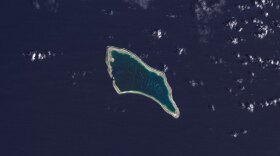Research published this week shows that sea levels will rise at least three feet by the year 2300, and that’s a best case scenario. Rising waters already threaten low-lying island nations in the Pacific and will eventually trigger mass migration. We have more from Neal Conan in today’s Pacific News Minute.
Small island states played an outsized role in the negotiations that lead to the Paris Climate accords of 2015. At the same time, they worried that even the most ambitious agreement would leave low lying nations exposed to catastrophe.
A study published this week in the British journal Nature Communications confirms their worst fears. Scientists found that even if the Paris goals are met, seas will rise about three feet by the year 2300 and continue to rise afterwards. That assumes that collective action by the world’s nations allows temperatures to warm no more than two degrees Celsius – 3.6 degrees Fahrenheit.
Reaching that target seems more unlikely than ever, as many nations struggle to meet the commitments they made in Paris and President Trump’s rejection of the accords leaves the world’s second largest polluter on the sidelines. The study found that every five-year delay in reaching the Paris goals would raise sea levels another eight inches by 2300.

While tiny nations like Kiribati, the Marshall Islands, Tuvalu and the Federated States of Micronesia face the prospect that their islands will become uninhabitable. A rise of three feet would flood the homes of tens of millions around the world.
Last week, a separate study in the Proceedings of the National Academy of Sciences found sea level rise accelerating, and projected an increase of two feet by the end of this century.




